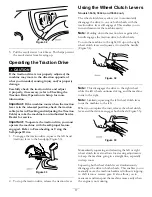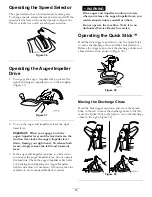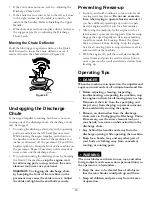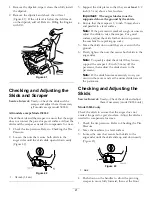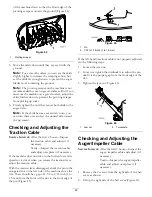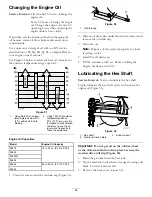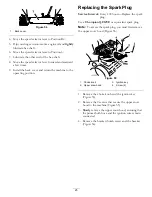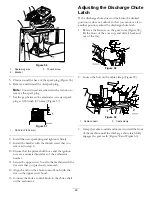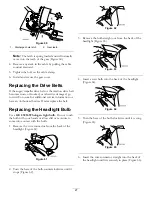
Note:
Ensure that the plastic clip on the wire
connector is on the bottom (Figure 17).
2. Secure a cable tie (from the loose parts bag) around
the wire and the handle about an inch (2.5 cm) below
the U-bolt (Figure 17).
6
Filling the Engine with Oil
No Parts Required
Procedure
Your machine comes with oil in the engine crankcase.
Note:
Before starting the engine, check the oil level
and add oil if necessary.
Use automotive detergent oil with an API service
classification of SF, SG, SH, SJ, SL, or higher. Refer to
your engine owner’s manual.
Use Figure 18 below to select the best oil viscosity for
the outdoor temperature range expected:
Figure 18
1.
Using SAE 30 at outdoor
temperatures below 40°F
(4°C) will result in hard
starting.
2.
Using 10W-30 at outdoor
temperatures above
80°F (27°C) may result in
increased oil consumption;
therefore, check the oil
level more frequently in
these circumstances.
Engine Oil Capacities
Engine Oil Capacities (cont'd.)
Model
Engine Oil Capacity
38614
38624
38624W
38634
18 to 20 oz. (0.53 to 0.59 l)
38644
38654
26 to 28 oz. (0.77 to 0.83 l)
1. Remove the dipstick and
slowly
pour oil into the oil
fill tube to raise the oil level to the Full mark on the
dipstick.
Do not overfill.
(Figure 19).
Figure 19
2. Install the dipstick securely.
Note:
Do not spill oil around the oil fill tube; oil
could leak onto traction parts and cause the traction
to slip.
7
Checking the Tire Pressure
No Parts Required
Procedure
The tires are overinflated at the factory for shipping.
Reduce the pressure equally in both tires to between 17
and 20 psi (116 and 137 kPa).
12

















